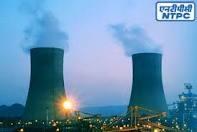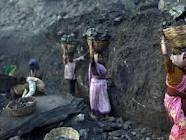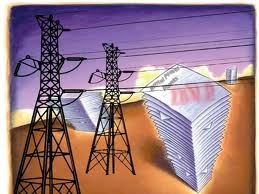India
India forms panel to assess imported Chinese power equipment
The government of India has set up a committee to assess the performance of Chinese power equipment.
India forms panel to assess imported Chinese power equipment
The government of India has set up a committee to assess the performance of Chinese power equipment.
NPC gets boost on Kalam's support to Kudankulam}}
Amidst the danger of degradation of the 2,000-Mw Kudankulam project in Tamil Nadu due to complete stoppage of work, state-run Nuclear Power Corporation (NPC) on Sunday received a boost after former President APJ Kalam certified the project had 3G safety aspects. Kalam, who has been quite vocal about the need for nuclear power and especially the Kudankulam project, held separate meetings with NPC officials in the early hours and later visited the plant site and met about 30 villagers. Incidentally, a section of villagers from 20 nearby villages came out in full support of the project and, in their submission to Kalam, expressed the need for early completion of the project and commencement of power generation. Kalam, who was accompanied by Atomic Energy Commission chairman Sri Kumar Banerjee, NPC chairman and managing director S K Jain and Kudankulam power plant officials, said he was fully satisfied with the safety of the plant. His visit to the project comes two days after Banerjee and Jain had met Tamil Nadu chief secretary Debendranath Sarangi and discussed ways to allay the villagers’ fears. The visit is crucial, especially when phase I of the project is 99.5 per cent complete and phase II is 97 per cent over. However, NPC, which has spent more than Rs 13,000 crore so far, is finding it difficult to carry out essential services at the site, thanks to the villagers blocking entry of its scientists and engineers. Moreover, 6,000 contract labourers have already left for their respective states due to the ongoing agitation that began on October 13. Site director M K Balaji told Business Standard: “The former president held talks with us from 12 am to 4.30 am and later visited the plant during 9 am-1 pm. We briefed him on the status of the project. He has expressed full satisfaction over the safety aspects.” Kudankulam panchayat chief P Izhil Aram said, “We have submitted a memorandum to Kalam, saying the work should begin immediately so that the generation can be started soon. The project is essential to meet the area’s and the state’s growing need for power.” He said the project was safe as advanced safety measures had been applied by NPC. “A couple of villagers recently visited the NPC-run nuclear power projects at Tarapur (Maharashtra), Kalpakkam (Tamil Nadu) and Rajasthan. We are of the view that there is no need to fear about safety and security. There is no danger to locals,” he opined. The People’s Movement Against Nuclear Energy (PMANE), which is spearheading agitation against the project, skipped the meeting with Kalam. Pushpa Rayan, coordinator of the steering committee at PMANE, said “We were prepared to talk to Kalam. We welcomed him on Saturday after his arrival. However, he should have been more open, keeping aside his pro-nuclear power stand.” She added that their agitation to press for scrapping the project would be further stepped up.
US nuclear regulatory group to visit India
India’s Atomic Energy Regulatory Board will a delegation from the US Nuclear Regulatory Commission led by its chairman Gregory B Jaczko from November 14 to 18.
NTPC to exceed 128,000 Mw in capacity by 2032
India's NTPC plans to take its capacity to over 128,000 Mw by 2032.
Hindalco's push for inclusion of thermal cogen plant under RPO gets opposed
The Uttar Pradesh Electricity Regulatory Commission has dismissed Hindalco Industries plea that grid connected that grid-connected coal based cogeneration be considered for fulfillment of the Renewable Purchase Obligation.
APL aims at tying up all loose ends for 660 MW Mundra TPP unit by January 2012
Struggling to regain its grip on the critical activities of its 600 MW unit of the Mundra thermal power plant (TPP), Adani Power Limited (APL) has made a contingency arrangement for structural erection works associated with the coal handling plant, hoping that the process is completed before the revised estimate of December 2011. With the grim reality of unstable progress weighing down on APL, it has now resorted to expediting the civil and structural fabrication works. Further, it has also started maintaining the ash handling plant, which has been reported as ‘critical’ recently. In all likelihood, the works of the plant, along with the commencement of full load operations, will now be completed by the end of January 2012. In addition to this, the feasibility of unit commissioning is also dependent upon the boiler light up (BLU) and turbine generator (TG) box up works, both of which have now been pushed ahead by a period of six months. The oil synchronization process is now scheduled to be completed by mid December this year. APL has been struggling with the coal firing process, with this crucial activity now anticipated to be completed by end of December 2011.
Lanco's Saibaba foresees India solar costs cheapening by 40%
India's solar power costs could fall by more than 40 percent by 2015, said Lanco Solar CEO V. Saibaba. Solar technology in India could provide a kilowatt hour of power at about 7 to 8 rupees a unit in the next few years, down from the current 11 to 12 rupees, due to surging global capacity, he explained. This will allow the industry to compete against domestic oil and gas firms without the help of state subsidies. It would also enable solar power to become a more viable option to coal, which costs around 2 rupees a unit, in fueling Asia's third largest economy and the world's third-worst carbon polluter. "The most important thing is the economics of scale are coming," Saibaba said on the sidelines of an industry conference. "In the next three to four years, I see the solar power costs coming down to 7 to 8 rupees a unit." Under its Solar Mission plan issued in 2009, India is to produce 1,300 megawatts of power by 2013 and 20 gigawatts by 2022 at an overall investment of about $70 billion. Lanco Solar is one of 37 companies selected by India last year to build solar power projects, as the country looks to boost production from near zero. "Given the current scenario with the way it is growing and the way costs are coming down, our industry will probably not require any financial support from the state going forward in maybe three to four years," Saibaba said.
NTPC bags Rs 43 crore contract in Bangladesh
NTPC Consultancy, a part of the state-run power major, has secured a six-year contract to provide operations & maintenance services at the Siddhirganj Peaking Power Plant in Bangladesh.
Maheshwar hydropower developer defaults on loan payment
With a massive financial burden weighing down heavily on Shree Maheshwar Hydel Power Corporation Limited (SMHPCL), the developer of the 400 MW Maheshwar hydro electric project (HEP) in Madhya Pradesh, the company is now trying to maneuver its way out of the chaotic state of affairs by securing infusion of equity from a potential investor or financier.Having defaulted on re-payment of the subordinate loan, which was due by mid October 2011, worth Rs 375 crore extended by its prime lender, Power Finance Corporation (PFC), the company has blamed the stop-work order issued by the Ministry of Environment and Forests (MoEF) for its failure.Speaking on the issue, SCMHPL has asserted that the MoEF`s unjust decision delayed the project by more than a year and prevented it from achieving the conclusion of all works as envisaged earlier.Further, the helpless SMHPCL was unable to venture out into the capital market and accumulate the required sub debt amount.With MoEF revoking the order on the condition that the project be commissioned only after successful completion of all rehabilitation and resettlement (R&R) activities, SCHMPL has been forced to focus on concluding all R&R activities at the earliest to avoid any further delay in commissioning beyond the revised schedule.In a desperate attempt to fast track the implementation of activities for the project, which is now slated to be commissioned in December 2012, SMHPCL has now diverted the fresh tranche of equity capital to fund the rising R&R costs, which have tripled from its original estimates, instead of utilizing it to clear PFC's pending subordinate debt.In light of the above mentioned setbacks faced due to the MoEF order, SMHPCL has only found it fair that it be granted an extension of 1 year from PFC to repay the loan.To substantiate its demand made to PFC, the company has claimed that the proceeds from the proposed IPO, which is expected to be filed by the second quarter of 2012, will be used for the purpose of repayment.
Bangladesh to build first nuke plant with Russia's assistance
A nuclear power plant will be built in Bangladesh with the help of Russia.
Bangladesh plant gets additional power from Rolls Royce
Rolls-Royce has signed a US$22 million contract to supply eight Bergen B32:40 16V reciprocating engine generator sets to Baraka Patenga Power Limited.
US may require India to amend nuclear laws
US Nuclear Regulatory Commission chairman Gregory Jaczko is expected to tell Indian representatives when they meet next month that its civil nuclear liability law would not pass muster in the US.
India's thermal power plants battle coal shortage
Out of the 86 thermal power stations monitored by the Central Electricity Authority, 44 stations have reported critical level of coal stocks.
Indian industry group calls for urgent reforms in power distribution
The Confederation of Indian Industry called for reforms in the power sector, particularly pointing out the need to curtail transmission and distribution losses .
Ex-IEA official tells India to go ahead with nuclear projects
India was advised to go ahead with its civil nuclear power projects to balance against the impact of high oil and gas prices.
Bhutan reiterates commitment to achieve 10,000 Mw by 2020
India and Bhutan have reiterated their commitment to achieve the target of 10,000 Mw of power generation in Bhutan by 2020.











 Advertise
Advertise


















